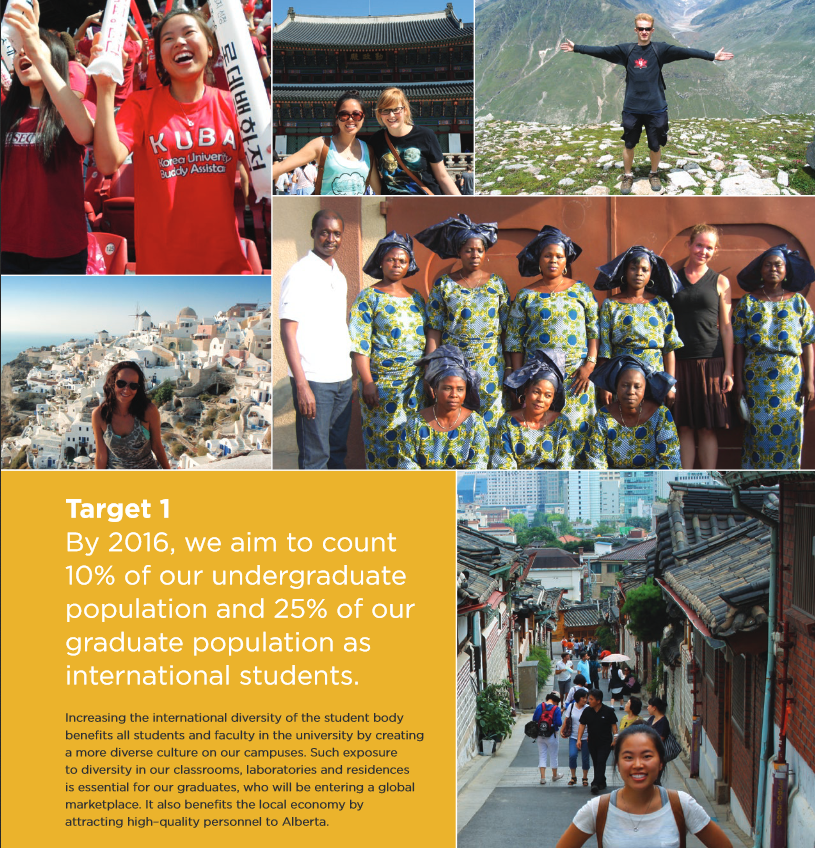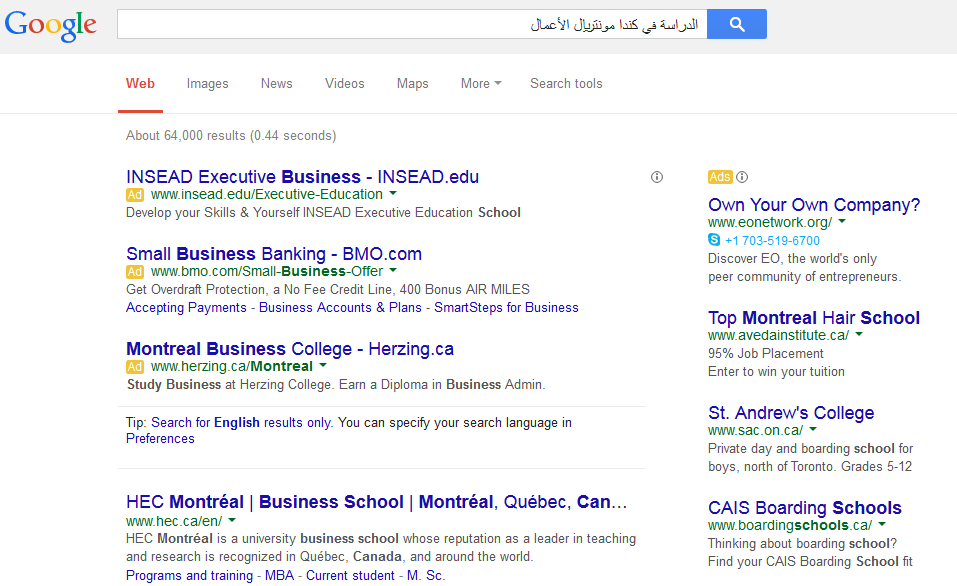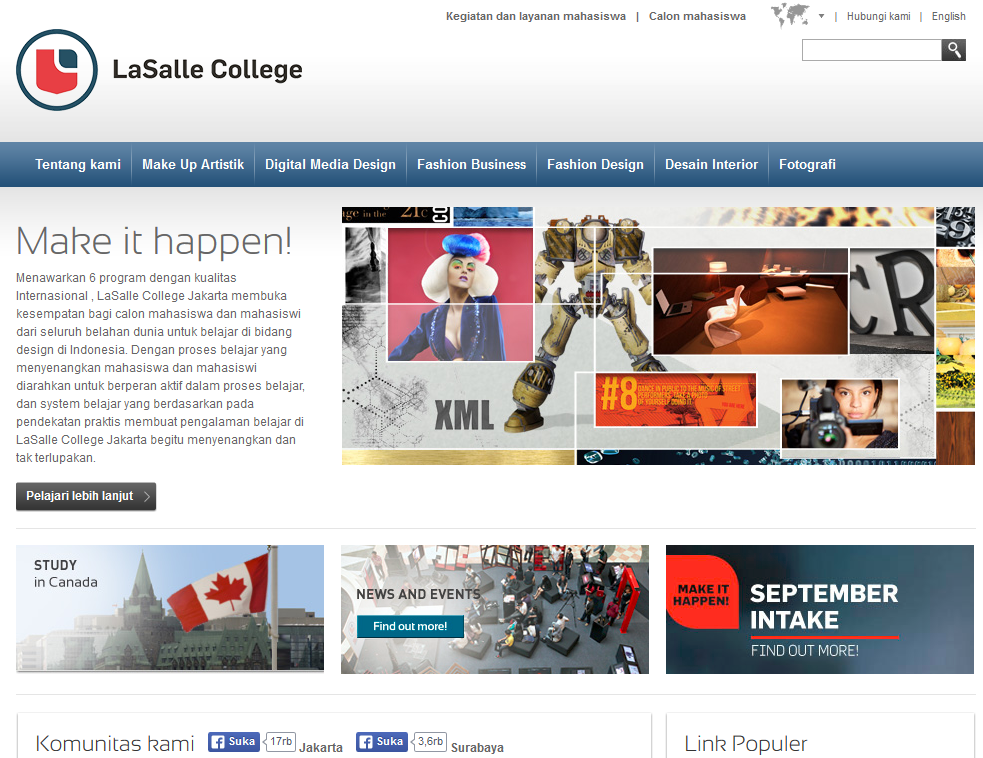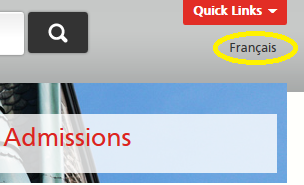How To Create An International Student Recruitment Action Plan
November 11, 2017
EasyUni Staff
While many admissions professionals continue to travel to distant corners of the world for uncertain returns, there is a growing understanding that emerging digital marketing techniques can deliver more effective results for far less of an investment. By embracing these new mediums, colleges can better control their communications and branding, reducing reliance on external agents while developing more flexible and customized management of the admissions process. Implementing these types of initiatives successfully requires a willingness to adapt to rapidly shifting student engagement expectations, understanding not only the continuous advances in available technological tools but the cultural nuances of various target markets. No small challenge!
Going global takes more than just talking the talk - many higher ed institutions passively court foreign students with little more than an international page on their website and perhaps some "one-size-fits-all" attempts at social media or PPC ads in other markets. While this might be enough for super-brands like Harvard, the vast majority of colleges and universities with international enrollment increases cite active recruitment as the reason for their success.
Creating a Culture of Internationalization
Making internationalization a true priority means taking a longer term, bigger picture view of its role in enhancing your institution. More and more universities are publicly declaring internationalization a key component of future success, embedded in strategic plans or elaborated upon in high level documents.
Example: The University of Calgary highlights internationalization as a "key strategic priority" in their pursuit of becoming "a global intellectual hub", according to their recent International Strategy document. The 24-page report highlights their commitment to these goals by illustrating current activity, tangible targets and strategic goals, namely:
Increase diversity of our campus communities Improve global and cross-cultural competencies within our campus communities Enhance opportunities for international collaborations and partnerships in research and education Leverage our unique areas of expertise to engage in international development
These kinds of documents serve to galvanize key decision makers while providing a shared reference for different stakeholder groups to further the school's mission.

Expanding strategic international partnerships, research collaborations, exchange and study abroad programs, and alumni relations can greatly enhance a university's educational capabilities, student opportunities and participation, brand reputation and much more. Colleges can strive to improve the experiences of incoming international students, thus growing valuable word-of-mouth referrals among other benefits, by broadening orientation services and retention tactics. Promoting internationalization means providing the pathways for growth, including resources for increasingly culturally diverse students (and staff) on campus to learn from each other.
These are all long-term projects demanding visionary leadership - but what can schools do right now for more immediate results?
Feeling out Markets with Paid Search
International strategic enrollment management begins with establishing and communicating clear goals for the number and types of students desired, leveraging enrollment data to forecast trends and develop realistic targets. Focus initial efforts by choosing markets with the best potential for your institution - likely typical leading countries of origin (China, India, South Korea) but sometimes smaller nations that have an established presence at your school. Also consider focusing marketing efforts according to preferred academic discipline and degree type.
Unique cultural and language considerations add an extra layer of complexity when going global - choosing appropriate keywords is not simply a matter of direct translation. Pay-Per-Click (PPC) advertising is a tremendously cost-effective method of revealing insights about potential markets, since expense is only incurred when prospects actually click your link. It is a great way to learn which search terms are popular and which ads better convert, letting you see which combinations of keywords and messaging are more effective in a particular market. For an in-depth look at PPC for international student recruitment, our previous blog on the subject is an excellent starting point.
Google AdWords has a free Keyword Planner tool for searching keyword and ad group ideas, but keep in mind that Google isn't the most popular search engine in several important source countries. Before launching a PPC campaign, it is essential that ad copy fits the requirements for the applicable platform, landing pages have been created on your website and analytics tracking has been established. Landing pages must meet expectations created by the ad copy and concisely convince prospects to take the next steps, such as completing an application or "request information" form.
 

International Search and Mobile Trends
Recent data analysis from Google shows a continuous increase in education-related search volumes, confirming that the student decision journey has indeed moved online. Non-branded search queries by prospective students uncertain of which school they wish to attend are rising at a faster rate. Google's internal tracking revealed that queries including geo-specific keywords generated strong click-through conversions. Increasing specificity by promoting particular degree and academic programs in specific locations is recommended for better results.
Of course, going mobile has been another top priority for higher education marketing. Optimizing for mobile-device usage is even more important for international recruitment, since a majority of users in several source countries are mobile-exclusive. A negative mobile experience on your website is enough for 35% of prospects to move on to the next potential college on their list, according to internal Google research. Make sure you have your most important bases covered when developing for task-driven mobile searchers - top selling points of your school, programs and admission info, videos and application forms are among the most popular features to include. Shorter forms are far more likely to convert. International students will also want to know things like financial and study permit details.
Internationalizing Websites
One of the biggest challenges of internationalization is developing your website to appeal to multiple markets and languages. Although many options will technically work, using a top level folder on the same domain as your other content (rather than a subdomain or microsite) lets you develop a customized experience with fully translated paths while enhancing your SEO. Keep in mind that search engines won't give your pages the same value if they think it's only an auto-translation (or if content is out of date), and to avoid the issue of duplicate content you must create the proper links between translated content to alert them if it's a translation. Alternate hreflang link tags let search engines know how content should be prioritized.
 

Right-to-left languages like Arabic require the appropriate fonts and additional "rtl" tags at the top level block element. Content using Chinese characters and other logographic languages presents the additional challenge of modifying the page layout and structure to accommodate the unique condensed properties. While providing content in multiple languages can be complex, it can go a long way to effectively communicating with foreign prospective students and, perhaps even more so, their parents. Ensure that users can easily navigate between available translations - the clearest way is to prominently display the language name written in that language at the top of the webpage. Even if you have multiple international websites, avoid auto-directing based on a user's IP address as it will irritate prospects and inhibit Google's crawlers from discovering your sites.
 

Content and Social Media Considerations
When developing any content for international audiences, it is vital to understand your target market as much as possible, including the local language (in the way that prospects actually speak), cultural norms and expectations, and priorities in education search. Try using student assistants to help develop or translate content and always test with various groups to ensure that messaging is clear.
Social media can be a valuable tool for discovering more about prospect groups through online conversations, informal surveys and the types of posts that receive greater interaction. Communication on these networks can serve to filter unqualified prospects and reveal insights about language proficiency, interests and your brand perception. It is an opportunity to showcase different sides of your institution and reinforce alumni successes.
International Lead Conversion
It is important that inquiries from all prospects, domestic or international, are addressed effectively and promptly. Students expect a quick email response, even if it is initially an auto-response with some helpful links - Hotcourses Abroad found that if given two similar universities, students from China, India, Thailand, Vietnam and Singapore would choose the one that responded fastest. Prospects prefer personalized responses signed by a staff member they can continue correspondence with.
Best practices:
Address the student by name Answer the question personally and in detail Provide helpful additional information, including social media and relevant links
Email drip marketing campaigns can efficiently track and manage large quantities of inquiries for the entire student life cycle, automatically triggering customized messages based on specific conditions that provide effective resources while minimizing staff requirements. Instead of leaving it up to prospects to continue correspondence as many colleges do, be persistent and frequent in your responses, varying the types of follow-up messaging and addressing potential concerns with multimedia supplemental information to increase the odds of making a connection.
Virtual Campus Tours and Hangouts
A campus tour is a big part of most students' decision processes, providing the opportunity for them to envision if they can really spend their next four years there. International students rarely have the luxury of visiting a prospective campus ahead of enrollment but virtual tours can help bridge the gap, emphasizing a school's strongest features and providing a glimpse of campus life. Google Maps Street View also offers interior virtual tours of some schools and a few US-based universities are already developing tours using new Oculus Rift virtual reality technology.

To get better personalized interaction despite the distance, more colleges and universities are adopting web-conferencing via easily accessible tools like Google Hangouts. These digital face-to-face tools not only allow admissions personnel to engage directly with international students, but also clarify solutions using whiteboards, share documents or slideshares, and guide prospects through relevant webpages via co-browsing. To make the most of these opportunities, school personnel should develop and rehearse a script to work from and test all equipment many times beforehand.
More International Recruitment Ideas
Digital marketing is advancing all the time, providing new tools for schools seeking a competitive edge in reaching prospects across the globe. Here are some innovative ideas for colleges and universities looking to access the world:
List with international portal sites Develop apps featuring application tips, sample lectures, campus videos/pictures English-language training (online modules and/or collaborations with other training facilities) or online language exchange Reach out to international alumni (through internal networks or tools like LinkedIn) to support recruitment activities
Whichever initiatives you pursue, improving your international student recruitment can best be accomplished when you have a thorough and accurate picture of your web activity. When managing several social media and other student marketing channels covering various markets, it becomes even more essential to have a clear system to reveal what is working where and monitor your ongoing reputation - software and student assistants can help. Google Analytics can help you to understand your student mix and top source countries so you can track and monitor your progress while effectively segmenting and customizing communications.
For colleges and universities seeking to move from passive to active international recruitment, Higher Education Marketing has created the new International Recruitment Action Plan with two service packages designed to generate measurable ROI improvements with immediate results.
What is your biggest international student recruitment challenge?
(Originally by Patrick Quinn of Higher Education Marketing, at http://www.higher-education-marketing.com/blog/international-student-action-plan#sthash.P0cM2sRh.dpuf)
Kickstart your education in Malaysia
We'll help you find and apply for your dream university
You might be interested in...
- The Role of Education in Promoting Health Equity: Lessons from World Health Day 2024
- Studying Abroad Tips: What Should You Do Before Coming to Malaysia?
- International Students' Guide to Success in Malaysian Research Programs
- Returning Home or Staying Put: Planning Your Career Path After Studying in Malaysia
- Crafting a Greener Tomorrow: Empowering Change through Zero Waste and Upcycling Practices
- Malaysian Higher Education's Global Outreach: Collaborations with International Institutions
- Initiatives by Universities in Malaysia to Prepare Students for Globalization
- International Student Guide: Applying for a Malaysian Student Visa
- How to Build Global Alumni Connections as an International Graduate in Malaysia
- From Local to Global: The Rise of Malaysia's Universities in International Rankings






